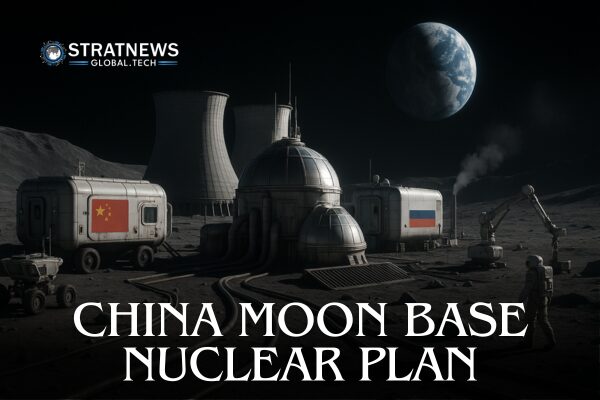China and Russia Moon Mission Plans Accelerate Toward 2030s
China is advancing plans to build a nuclear power plant on the Moon, which could power a future International Lunar Research Station (ILRS) being developed with Russia. The proposal was highlighted during a recent space conference in Shanghai, where Chinese and Russian officials discussed long-term lunar ambitions.
As part of its strategy to become a leading space power, China aims to land astronauts on the Moon by 2030. The Chang’e-8 mission, set for 2028, will help lay the foundation for constructing a permanent manned outpost. This base is likely to be built near the Moon’s south pole, a region also targeted by NASA’s Artemis programme.
Powering the ILRS with Nuclear Energy
At the conference, Pei Zhaoyu, chief engineer of the Chang’e-8 mission, presented energy plans for the ILRS. These include deploying large-scale solar arrays, and installing surface pipelines and cables to provide heating and electricity.
Significantly, the presentation also included a nuclear reactor as a potential energy source — suggesting China supports this joint venture, even though no official confirmation has been made. Russia’s Roscosmos had previously stated its intent to construct a Moon-based nuclear reactor with China by 2035.
Wu Weiren, chief designer of China’s lunar exploration programme, underscored the importance of nuclear energy in lunar missions. He praised Russia’s experience with space-based nuclear power, noting its leadership in the field. “I hope this time both countries can send a nuclear reactor to the moon,” Wu told Reuters.
Strategic Cooperation Amid Global Tensions
The ILRS was planned before Russia’s 2022 invasion of Ukraine. However, as international sanctions continue to isolate Russia from Western space technologies, cooperation with China has become increasingly valuable for Roscosmos.
Chinese analysts note that China’s growing expertise in satellite launches and lunar exploration can support Russia’s ambitions. According to Liu Ying of the Chinese foreign ministry’s diplomatic academy, China can ease pressure on Russia and help it achieve new breakthroughs.
Roscosmos researchers at the conference also outlined resource plans, including the use of lunar materials as potential fuel. These discussions align with China’s broader “555 Project,” which seeks to involve 50 countries, 500 scientific research institutions, and 5,000 researchers in the ILRS initiative.
A basic version of the ILRS, centred on the Moon’s south pole, is expected to be operational by 2035.
with inputs from Reuters


